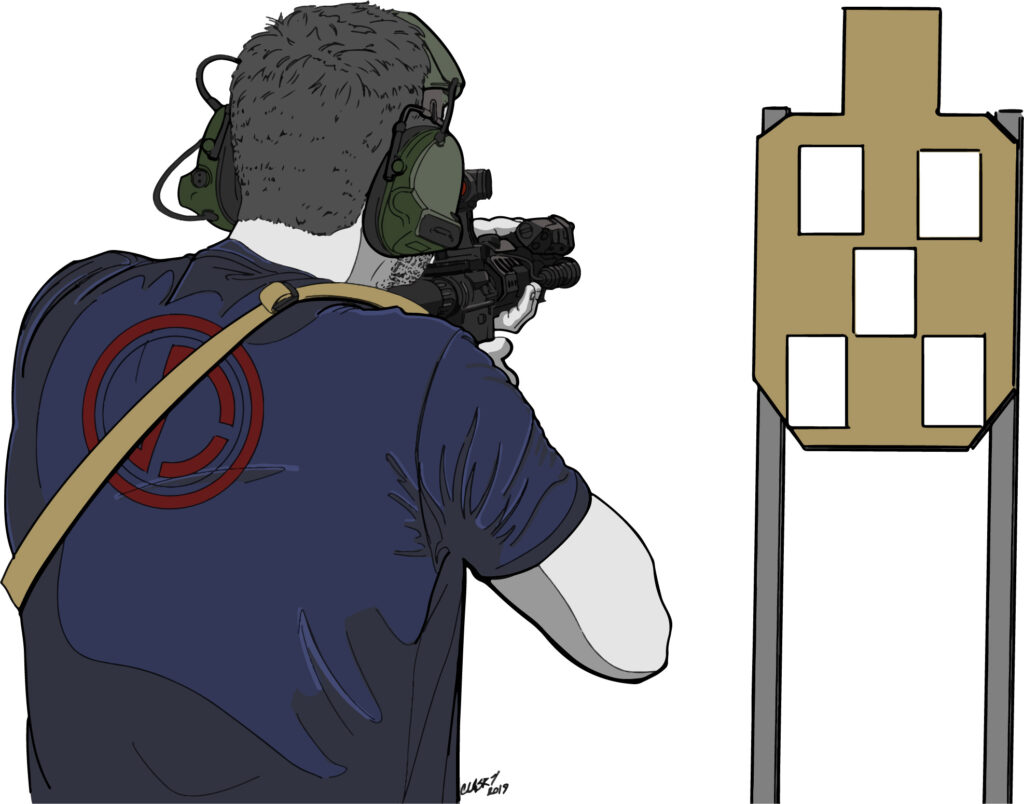As an avid student and teacher, I use drills and exercises to isolate skills. Drills are not scenarios. They should be viewed as an exercise. Like going to the gym, you isolate certain muscles to work them out to get stronger.
One of my favorite exercises is the 5 in 5 Drill. It is an exercise that I developed to enhance and test a shooter’s skill. One of the things I look for in a drill is its way to push me mentally and physically. I want it to help develop the myelin around the central nervous system. Myelin insolates nerve cells to increase the speed at which information is transferred from cell to cell. If we can increase the myelin, then we can better develop our efficiency and consistency with how we shoot.
The 5 in 5 drill helps this development, which I believe is necessary for a combat or performance-based shooter. The exercise helps practice and apply presentation, trigger speed, sight recovery, holdover, recoil management, cadence and transitions all in one. All which have a contextual place in a combat or performance-based shooter.
This exercise can be used as a metric to test a shooter with different equipment and loadouts. It can also be modified to add reloads or transition to pistol. Your imagination is your only limitation. Be creative, have fun and push yourself.
Set Up the Drill
Required for the exercise:
- 1 target
- 5 index cards
- 5 yard space between shooter and the target
- 25 round magazine
- Shot timer
Setup:
- Put up 1 target with 5 index cards glued or stapled on it in a number 5 dice orientation.
- At 5 yards load a 25-round mag into your weapon and standby for the timer.
- Shoot the 5 index cards with 5 rounds each starting at the top left, top right, low right, low left, then center.
- Write down the time and count misses. Lowest time with least misses is the goal. Under a 7 second par time is good work.
About Jon Dufresne:
Jon served with 3rd Battalion, 75th Ranger Regiment, deploying multiple times in various capacities. The Ranger Battalion provided Jon with training and firsthand experience in small unit tactics, airborne operations, field medicine, breaching, foreign languages and small arms.
Upon leaving the Army, Jon worked in executive protection and acted as a law enforcement consultant, molding his military experience into a contextual view of the threats faced outside of combat environments. He comes to the firearms industry with an ideal blend of military and citizen, shaping his courses to apply to Mil, LE and citizen students alike. Learn more about Jon, his classes and his company, by visiting: kinetic-consulting.net.
Text by Jon Dufresne and illustrations by Charles Lasky

